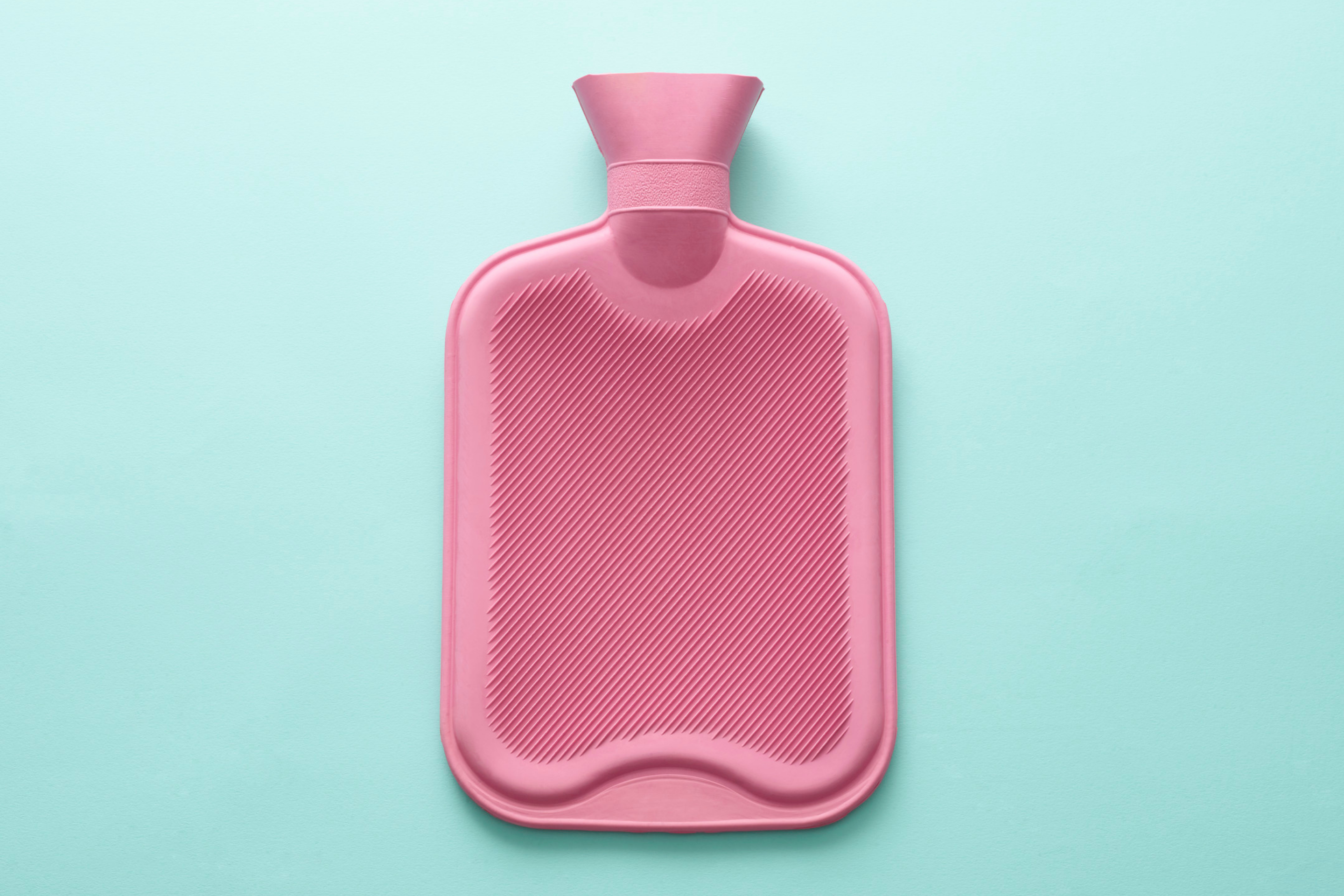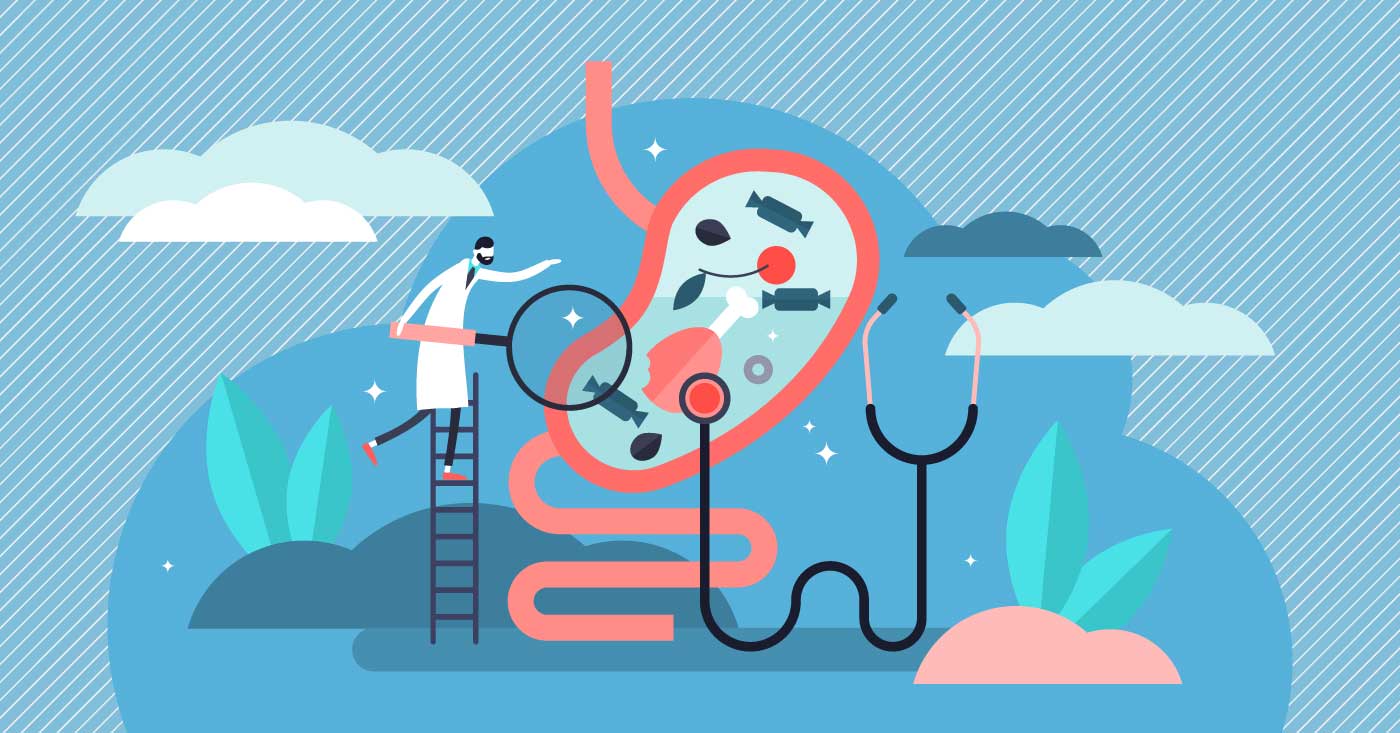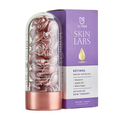Podcast Diaries: The Period Podcast S03E29
Mar. 10, 2020 By BeYou
Why we love this episode:
This week Dr Clancy speaks to the mother of menstrual cycle research! They go into menstrual cycles, perimenopause, and oestrogen. Dr. Prior made several important interventions in clinical research on the menstrual cycle, asking: Why are we comparing two groups of women who are so different then blaming all those differences on physical activity? Why are we acting as though physical activity is so damaging to fertility? And, why do we do so little to translate this work to the menstruators who so desperately need it?
Here at BeYou HQ we thought this would be a great episode to share with all of you. Lastly, if you’ve not been following this series of podcasts with us then make sure you go and check it out on your favourite podcast app.
Listen & Learn:
Transcript:
And realize most of the literature was prejudicial, who's immediately taking cross-sectional data, not taking into account things like women were away from home or women were stressed or women were poor, that were related to why they were having strange periods.
Okay.
This is period podcast, episode 29 I'm Kate Clancy and I'm your host. I'm a biological anthropologist and intersectional feminist biologist and a period enthusiast. You can find me on Twitter and Instagram a period podcast too and that's my Gmail as well.
I am so pleased to bring you this week's episode with guest, Dr. Jerilynn Prior. Dr. Prior is a professor of endocrinology and metabolism at the university of British Columbia in Vancouver.
Her work is among the very first in my field to look at the ways in which clinical researchers were thinking about menstrual cycles and pose a few questions, like how can you study exercises, effects in the menstrual cycle by comparing young women at their first elite marathon training camps to suburban non exercisers.
How can we keep neglecting the other stressors in our lives and why do we keep demonizing the occasional non-ovulatory menstrual cycle? Yeah, I said it, you don't have to ovulate every menstrual cycle, and in fact it would be a little unusual if you did.
Dr. Prior drops so much more wisdom here from the history of the field, to how to really understand menstrual cycles, to a major passion of hers, which is to elevate the study of perimenopause, which has been really neglected in clinical research.
Dr. Prior is the scientific director of the center for menstrual cycle and ovulation research and the author of a novel oestrogen storm season intended to help normalize the experiences of peri-menopause. I will warn you that the audio quality is not great, but this guest is one of the greats.
So I encourage you to listen. Let's get to the interview. So Dr. Prior, thank you so much for agreeing to be on period podcast. You're someone whose work I have looked up to and read for many, many years and I really respect your particular not only expertise but sort of broader framing of it, how you think about women's health. How did you first get interested in setting women's health and what were some of your earliest projects?
Good question.
I would have to say that my curiosity about women's health began with my own experience of losing my period when I went away to university. And I recognized that it was a major change because I came from a very small town in Alaska, to a suburban college really in Oregon.
And the entire college was larger than the largest town that I lived in, and much of the time I lived in a small fishing village. So it was a huge change for me. But I knew I was eating well, I knew I wasn't pregnant.
I recognized that I was working as hard as I could because I needed to get high, good grades in order to get scholarships, I was poor. So I figured that, this was my body's reaction to this huge change, and I didn't talk to anybody about it. Not anybody, not even my mom.
And when I went home for the summer, my period came back. But that sort of set the curiosity in me about why did this happen and what are the variables and was this okay or not okay.
Anyway, so when I worked in various environments, urban, where I went to medical school in Boston and then I worked in various places and then in the far North in Alaska, before moving to the Vancouver to take up an academic medical career.
And I realized when I came here, that there were endocrinologists here already specialized in diabetes and thyroid and pituitary and that I needed to have something different as a subspecialty in order to work in an academic center.
So it was quite appropriate at that time that, they called it aerobics in the 70s, that the aerobics fad was taking off and that women were being allowed to or doing it in spite of not being allowed to run longer distances.
So I began basically looking at women who are physically active and trying to understand what was going on with their cycles and their energy as they trained, and realize most of the literature was prejudicial.
It was immediately taking cross-sectional data, not taking into account things like, women were away from home, or women were stressed, or women were poor, that were related to why they were having strange periods. And that was the beginning.
So actually if you could, explain a little bit more. I think a lot of our listeners are not themselves academics. Explain some of those methodological problems. Like what is cross-sectional data collection and why might that not be a good idea for the kinds of research questions that were interested in.
Okay. So, for example, taking women from suburbia who are living easy lives, and comparing them with women who are living away from home or at a training camp, training for their first marathon, it is mixing up a whole mess of things that are different between those two groups.
So then you do the two, the study of the two at one point in time and you say exercise causes all the things that are different in the exercising women. That's what I mean by cross-sectional and that's the grounds for lots of prejudice. It's exactly the way this society reproduces its own preconceived notions.
Right. So we're comparing really the wrong types of groups. So what would be a better study design? I know off microphone, just before this we were talking a little bit about some longitudinal projects that you've done. Can you maybe tell me a little bit more about those?
Yes. I started, first of all by realizing I actually worked with some people at Simon Fraser. They had a conference on the female athlete in the summer of Myers, spring of 1980 and I went to it and they had a fun run with it and I ran the fun run and horrible Safeway runners.
And then I started doing some research with them over the summer. I realized that we needed some good way of documenting, first of all, the history of women's reproduction before they began their exercise, but also especially some way of documenting ovulation that was easy for the women to do, and that was accurate.
So one of my first projects was to find out a way to make the basal body temperature or BBT as it's commonly known, into something that was scientific. And in order to do that, we had to take it away from women plotting their own data when they're half asleep in the morning, which doesn't work, even for scientists.
I've tried and failed.
Yeah. Yeah. And I discovered that these kinesiology students, highly motivated, couldn't accurately do it. So take away the graphing business, have them not record their temperature, well record their temperature first thing in the morning, but put it down on paper in the evening when they have a little more ease of time.
And they also can see straight and they're not rushing off to a class or something. And then to make the analysis not as it currently still is eyeball, okay, it looks like it's lower here and that it looks like it goes up over there, which is not accurate.
So what we did was to use a standard statistical method, least means squares, which does a running average and then finds a spot where there's a split in the temperatures across the cycle. So there's one place where there's the biggest split in two temperatures.
And then we tested that split for statistical significance and then called that the start of the post observation or luteal phase of the cycle. So we made a quantitative basal temperature method. So, that was one of the first things.
And with volunteered women who cared about women being able to exercise and being able to help fully exercise, we also did some prospective studies and found that those who had longer training runs tended to have more shortening of the luteal face.
Another study that I did was following two women over one entire year, as they trained for a marathon. And from those two women's data, we learned an incredible amount about the adaptation of the body to increasing wrapping up exercise, in a healthy way.
So then I applied for and initially didn't get the funding to do a one year observational study, but applied again with bone as the primary outcome. And then when we got funding, mind you funding for a year to do a one year study, which is any rate I shouldn't have accepted the funding in reality because you can't recruit women screen them and do a one year study, with one year of funding. But anyway, I did it.
And we recruited something like 80 women and they all had to meet the criteria of, first of all being normal weight, second of all being 20 to 42 years of age with normal length cycles consistently.
And then the most strenuous of all was that they had to have normal luteal phase lengths on two consecutive cycles. Meaning that the older literature had shown that 10 days, any luteal length less than 10 days was infertile, you couldn't get pregnant in that cycle.
So we use that as the norm. So they had to have two consecutive cycles that were normal in length and normally luteal phase, before they could enroll in the study. And we enrolled women on purpose who were, it was pejorative to call women sedentary in Vancouver in those days, I'm talking in the mid late seventies, early eighties now.
So we called them normally active women who did a little walking to and from work or whatever, and would play tennis on the weekend in the summer or go skiing in the winter or swimming or something.
Then we had women who were runners but running just for their own health and fitness, not training in particular. They might do a fun run now and then, and then women who were training for and planned to run a marathon.
So those three different exercise groups were all examined the same way over the same period of time. And what we discovered was that, first of all, nobody lost their period. There were very few long or short cycles. The majority vast, like 98% of the cycles were normal in length.
But we discovered that the major changes were in the length of the luteal phase across the year, and there were no differences in cycles or luteal length between the three exercise groups.
So clearly marathon training in women who start out being ovulatory and healthy, doesn't cause amenorrhea, and we further showed it doesn't cause bone loss. Because the main reason for bone loss in that study was not ovulating or having multiple short luteal phase cycles, which was a new observation, which means that if their cycles were normal, and we confirmed this with serum oestrogen tests, that oestrogen levels were normal but they didn't have enough progesterone so their progesterone levels were low.
That was a reason for bone loss. And prior to that point, the only explanation for bone loss had been low oestrogen. So this says you need not only oestrogen, you need normal progesterone in order to prevent bone loss.
So that paper, I was very lucky, I submitted it to the new England journal, got a provisional acceptance with revisions, then the editor changed, the sub editor and clearly the sub editor did not want to publish that.
And so I got, this was the days when you typed everything out. So I got this remote paper back with Brown ink all over it and I made the changes if they didn't change the meaning and replied to the editor, told the reviewers what I changed, et cetera, and then submitted it again and got it back again, this time we're greening all over it.
And then in actual fact, the editor had changed back to my original wording in some cases with his green ink. And finally, reluctantly it was accepted. But when I came to review the proofs, and this happened when I was speaking at a sports medicine conference in the middle of Manitoba, I realized that they had changed, that the editor had changed not only the title but also the abstract.
So instead of "ovulatory disturbance and spinal bone loss", for the title, it was changed to "menstrual cycle disturbances and bone loss". And a similar thing was changed in the abstract.
Which I mean, having spent months responding to this editor and then to have what was accepted, it changed to improve, I was just livid. And so I wrote back and said, you have changed my manuscript is not accurate and you don't have permission to publish it as you've changed it.
Which was, I mean, my career was dependent on that getting published, but I wasn't going to publish something that didn't accurately reflect what those women had worked so hard to show.
And they backed down, it was published and it was a lead article in the new England journal in 1990.
I kind of have two related questions for you. So you're talking about, this is the new England journal of medicine you're talking about. Yes?
That's correct.
And you've published a fair bit in clinical journals. So you do try to reach out to and engage with that audience in your work?
I'll engage with anyone.
So why do you think that clinicians and medical researchers seem to be so against some of the things that you're finding in terms of energy deficiency, and exercise and sport, not necessarily having the extreme effects that they perceive them to have on the body.
And how do you think that might've affected the kinds of misconceptions that just lay people have about what constitutes a normal menstrual cycle?
Obviously, I don't know the correct answer to that question. It's a philosophic one really, but I think it lies in the hands of gynaecology, who have focused on oestrogen and who, well, a friend of mine says gynaecology was discipline of medicine before the germ theory of disease, implying that some of the concepts are still back there.
Anyway, so gynaecology has said forever, a regular cycle is a normal cycle, don't worry, dear a Pat on the bum. And that message has become a culturally accepted truth and therefore something that alters that truth is upsetting.
Yeah, certainly. So last season I interviewed Mary Jane de Souza and also an eating disorder coach or sort of intuitive eating coach, Lou Yurick. And one of the things that I found really interesting was like you said, how this idea of the normal menstrual cycle has really pervaded our consciousness to the point that sometimes when women lose their cycles, they do feel adrift or less womanly.
And it becomes a goal to figure out how to get their menstrual cycle back. Do you think it's a bad thing when women for, I mean for reasons that are not always clear to them lose their menstrual cycle?
I don't like the terminology bad, that's a value judgment, but I do know that if you lose your cycle, you lose bone, and it's rather dramatic bone loss that occurs. That's one biological thing that we can measure that we know is negatively affected.
The goal of our bodies, is to maintain the optimal balance under the environment, the circumstances that each woman lives in. And so the hypothalamus very, very carefully guards our ability to become pregnant because, and this is something most people don't realize that when we release, that an egg and make lots of progesterone, which is normal, it raises our core temperature and that requires us to eat about 300 calories more a day in order to stay in balance.
So if we're in a starvation situation, or we're so stressed that we can't eat, normally, we're going to be losing weight. And in that circumstance it would not be a good idea for us to become pregnant.
You see, you see where I'm driving, I'm trying to show that the body's decisions about amenorrhea or shortening of the luteal phase are ones that are the wisest compromise for the individual, that the hypothalamus is making them our behalves.
Yup, absolutely. So then how often do women in industrialized environments, by which I mean, folks living in North America and other sort of Western, industrialized rich, sorts of societies, how often do they really menstruate?
Is it something where, the majority of women are menstruating every 28 days and having fully ovulatory cycles or is it something a little different?
The majority of women are menstruating, not exactly 28 days. The normal range is anywhere from three weeks to five weeks or 21 to 35 days. And there's normal variability in that. Interestingly, there are no population based prospective data, to answer that question. Isn't that amazing?
I mean it's so frustrating actually cause it's so expensive to do, is what I find is why it's hard to get folks to study multiple menstrual cycles in a row of data, more than just one measurement in the follicular phase and one in the luteal phase, that's the first and second half of the cycle for our listeners.
I don't know about you, but I find it really hard to seek funding for large enough amounts to do that kind of work.
Yes, it requires commitment on the part of the participants. And this is a commitment that, I don't know, maybe women are less likely can make now. But I was happy in the early days because women were invested in showing whether or not being physically active was doing something to cycles or doing something to bone. They were motivated to learn more.
And for that reason we had pretty good commitment of those, the 66 women that finished this study. And the other is that we as researchers, treated them as co-investigators.
Basically their data, where the heart of what we were learning and they all of their own data, they got explanations about their data, the coordinators for the study got to know them individually, could name their pets and their partners and their jobs and, in other words, it was a Collaboratory effort on the part of everyone involved.
And I was the principal investigator for this study, but I was also a participant in the study, so I knew exactly how hard it was. And I found it extremely difficult to do the seven day diet diaries every three months, which is what we built into the protocol.
Oh, I still remember, I still remember that. Anyway, so it's very hard to get prospective data, but from prospective data you learn so much more than a quick and dirty cross sectional study. So it's invaluable.
So it sounds like the normal range of the menstrual cycle is anywhere from three to five weeks. How often, just in a natural living population, some of whom are exercisers and some not, how often do women tend to ovulate?
What's just sort of the natural range of variation for the frequency of ovulation, say over the course of a year?
Okay. It depends what group of women you study. If you study women who are trying to get pregnant, who were from Chicago, you're going to get a different answer than if you study randomly selected women in a whole population.
So we did that in Norway a few years ago. There's a County North of Trondheim, sort of in the middle of Norway where they're doing a series of general health studies, the community participates widely in them, and so most of the women in the community would volunteer.
And what we did was to get funding from the Canadian institutes for health research, which is like NIH in the United States and for analysis of serum samples for progesterone and oestradiol, and we ask women before they were already scheduled to come in for a visit, in which they had their height and weight measured in blood pressure and blood taken anyway.
We asked them to tell us, what was the date your last cycle, your period began, what is your usual cycle length in an exact day? So they had pay attention over several cycles and are your cycles regular enough, so you can confidently say, my cycle length is 27 days.
So when they came in, we measured oestrogen and progesterone and about 13% of women ages 20 to 49 had two irregular cycles, to be able to say what their usual cycle length was. So those were basically eliminated from our calculation.
Then we found that, about half as one would expect we're in the follicular phase and about half were in the premenstrual or the two weeks prior to their next flow. While about 10% of the women we managed to get the date of their following menstrual cycle start, so that was kind of a confirmation.
Anyway, then we used a level of progesterone, which has been shown to change the lining of the uterus into secretory, which is what progesterone does, and that level of progesterone for those who care, it's 9.54 nanomoles per millilitre or three nanograms per millilitre.
If they're level in the second half of the cycle was above that, we said you ovulated. And if it was not about that, we said you didn't ovulate. And what we found was that about a third of all of those regular cycles, were not ovulatory in that particular cycle.
So then in ovulation, even among sort of healthy free living folk is not a totally uncommon phenomenon.
That's correct. And just to follow up on the dogma that dictates publication, we submitted those data to the new England journal, journal of the American medical association, British medical journal, Lancet and Canadian medical association journal, and it was rejected by the editors, not even by reviewers, it was rejected at the editorial desk.
Even though we had almost 4,000 women to start with, 3,700 women in this study, and it was the first time a random population sample had ever been systematically tested, for the prevalence of opulence.
Yeah, no, I mean I think the bias that ends up manifesting not only in sort of how popular misconceptions of these things arise, but also just in researchers exposures to these things is a really big issue.
I'm hopeful that some of the ways in which people are moving towards pre-prints, so sharing some of their papers before they get submitted, might be a way to start to counter some of this bias.
But yeah, many of us have encountered these problems right? Where people are not interested in publishing work that goes against some of the central dogma that we hold around normal menstrual cycles.
In my field, if we pre-published something, we couldn't get it published. It's the only thing that's allowed is to present an abstract at a meeting. By the way, for those who are interested, we got that paper in to the public library of science one, BLOS-1 in 2015. So if you look up ovulation prevalence, BLOS-1, you'll find it.
Great. And I'll make sure that we also link to that in the show notes.
So you'll be interested to know that, sorry this is this little story, but the British medical journal has on their website, that if you disagree with us, our decision about a paper as an author feel free to write to us and explain why.
So I wrote to the editor who happened to be a woman of the British medical journal and said if a third of all men in the community were not ovulatory at any one month in time, that would be headlines.
Why is it that you're suggesting this belongs in a woman's journal or a specialty journal, when it affects all the women on the planet? And then I went on to say, well, perhaps British medical journal should be renamed British medical ministry.
We sent it by courier registered mail by fax, by email, and we send it by email every two weeks, all summer, and we never got a response.
Yeah, I'm sorry to hear that. So some of your more recent work... so that was, to me, a landmark study is showing that, it's normal and free living women for up to a third of women to have anovulatory cycles.
And I think it destigmatizes anovulation and helps us understand why conception is not this automatic process, even for completely healthy people. But I know you've also done some really important work in shifting our thinking around perimenopause.
So can you just briefly define what perimenopause is, and tell us a little bit of what you wish more people about perimenopause.
Absolutely. Perimenopause is a long and variable and unpredictable transition into the final cessation of menstruation, which is called menopause. So it extends from I think regularly cycling women who started having sleep trouble and night sweats, all the way through to a year after the last months, full flow.
So for some women like myself, that can be 10 years. For others, they have very little symptoms or changes and observe those changes only for a couple of years. So let me put perimenopause into a con text first.
Again, cultural or societal context. The word perimenopause only became a mesh term, a medical library of science official term in 2005. If you weren't online, I would have made you guess.
Before that, the word that was used to cover everything was menopause or climacteric. How is that for old fashioned. And the concept that went with those lumping of perimenopause with menopause terms, is that all of them are about dropping oestrogen levels and oestrogen deficiency.
Now that oestrogen deficiency term, just by maybe editorial for a moment is a marketing term for Premarin. It was coined, when the very avid manufacturers of worst piece oestrogen was being promoted for every menopausal woman who was a force lacking in hormones.
So just again, there is no such thing as oestrogen deficiency without also progesterone deficiency. The first change, if there's any decrease in ovarian hormones is a decrease in progesterone all the way down the line of stress or say in the pre-menopausal years.
Do we end up with changes in cycle length, or if somebody is young, in other words that within 10 years of the first low? So the concept of oestrogen deficiency is wrong and it's really wrong to apply it to perimenopause, because what I discovered and what the Net Santoro with Great Pluck because she's a gynaecologist, she said before me, is oestrogen levels are higher than normal in perimenopausal, higher than in premenopausal women.
So there's an overshoot of oestrogen and a deficiency of progesterone and even in ovulatory perimenopausal cycles. And I think the combination is why women have night sweats, sleep problems, heavy flow, increased cramps, volatile mood, plus the stress of changing from what our society deems as young and fertile into something not valued in our culture, which is old and non-fertile.
Right? I mean that's the thing that I don't know that many researchers are considering, when they look at how stress affects the menstrual cycle. Is that, there are stressors that accompany aging that are not necessarily about the process of aging, but about the changing cultural perceptions on you as you age.
Just like there's been some recent work to show that some of the stressors of carrying, additional fat tissue or being overweight or obese don't actually come from carrying that extra tissue per se, but the stigma and bias that you receive, culturally from carrying that weight right?
And that, that's an additional and sometimes worse burden, significantly worse burden than the physiology of adipose tissue or aging processes or any of that stuff.
Mm-hmm (affirmative)- It's always a combination of physiological effect and asocial cultural emotional effect, because our mind and our bodies are not separate. They're one and the same.
Absolutely. And I think connecting the body and the mind better is something that really is a major charge of all menstrual cycle researchers is how can we stop detaching these two things as though they're separate when they're so obviously intertwined in this particular bodily right.
And in fact, in all, if we really are honest, every process is a mixture. Basically, there isn't any physiological thing that happens in our bodies, for which we can't figure out a contribution of both something that has to do with physiology and something that also has to do with our emotional, social, environmental response where we always are both. We always are.
It's an integration of both mind and that's really true in the reproductive system.
Certainly. So where do you want the field to go next in terms of this, what aspects of perimenopause do you really think are on the horizon that we should be paying more attention to?
Well let me back up just a little bit because I mentioned stress about becoming older in perimenopause and there's a whole body of work that says that perimenopausal symptoms are because of the stress of society's negative approach to aging in the West. Okay. And Margaret Locke and I forgot who else?
But anyway, those, they would look into Japan and say, Japanese women don't have the same symptoms in Japan, aging is aging. Women are venerated, therefore, right, all our symptoms in the West are because of stress.
But what I said before about oestrogen levels being higher is the driving mechanism for the changes in perimenopause. So what happens is that our ovaries, in addition to follicles that make oestrogen first, and then if everything is right, release an egg and make progesterone, those follicles and the tissues in the ovary also make a little hormone called inhibin.
An inhibin's job is to decrease to feed back to the pituitary and suppress FSH, follicle stimulating hormone. It turns out that the eggs that are in the center of the ovary, the oldest eggs, if you will, the ones that haven't been released in our earlier years, have less inhibin.
Therefore, FSH rises a bit, stimulates more follicles to start growing, they all make more oestrogen, and that means that the normal feedback systems aren't working. So in other words, for example, you could take the birth control pill when you're younger and you know for sure it'll make your own ovary hormones lower, that's the way it's supposed to work.
So for like women in their 20s and 30s right? Because I'd imagine those values in the birth control pill are maybe too high for adolescent girls, or at least that's been my suspicion for some time.
Okay. Come back to that.
Okay. Please do. Cause I'd love to know what you think.
So basically, the hormones in the birth control pill, oestrogen in particular has to be high in order to suppress the process that leads to ovulation and therefore a fertile cycle. Okay.
So that's true, and in the premenopausal years, but it isn't reliably true in perimenopause because high oestrogen doesn't always suppress FSH, no, because it needs inhibin to work with it and inhibin levels are too low. Okay?
So yes, there are stresses associated with aging, social stressors that are associated with aging for women. But I think the bigger stressor is dealing with high and swinging oestrogen levels. In other words, oestrogen levels are not only average higher, but they're radically higher.
So for some women, they may be double what should be the normal mid cycle, peak level. And if you're like me, that gave you terribly sore breasts and we've now know from some very interesting data, that as oestrogen levels drop, we not only get hot flushes, but we also can become depressed.
We feel depressed when our oestrogen levels drop. And at the same time, there's a huge surge of stress hormones in the brain, which is what really causes the hot flushes and hot flashes.
Interesting.
So it's a very complex system. The important thing for women to know is the perimenopause ends. So just, those only about 20% of us are symptomatic, but for all of us it ends, and for those who are most miserable in perimenopause, they're likely to be most relieved when they become menopausal.
I can imagine.
So I wrote a... stuck my neck out in a rural that believed in this dropping oestrogen, oestrogen deficiency idea and wrote a major review that was published in endocrine reviews in 1998 that basically set forth that oestrogen was higher, the reason for it wasn't inhibin, the reason for most of the symptoms and a way of understanding the changes over a long period of time.
But even though that review was out in the top ranks and different journal, I still was not allowed to teach the medical students in my university about perimenopause. It was skipped over basically in their only reproductive block.
And so finally I said, look, women need to know this. So I did something very strange, which was to write a novel. I made up a woman doctor, I made up women who were seeking help in menopause and wrote a novel that's called, "Oestrogen Storm Season, Stories of peri-menopause".
It's now out in its second edition as eBooks on both Google and Amazon format, and tell your listeners that we make great birthday presents and the money from it, is going to help the center for menstrual cycle and ovulation research continue.
That's amazing. So I have a quick question for you about this oestradiol FSH, inhibin thing. From an evolutionary perspective, it seems like, one of the things that, we know about women as they're getting older is that they are more likely to potentially have twins, partly because they're kind of cranking out, as many eggs as they can.
They're not necessarily doing just one at a time, this isn't true for all women, but there's a slightly increased risk of obviating more than one egg at a time as you get older. And that's part of the reason why the chance for twins increases when you're older.
Exactly.
I'm guessing that's probably related to this phenomenon as well. Yeah, because, and just for our listeners so they understand, when you're in your 20s and 30s, the body is sort of making these cost benefit ratio analysis, around quality.
So they want like the highest quality egg as much as, to the extent that they can in the context that they're in, is what they're going to choose, what the body sort of quote en quote chooses to ovulate.
But with age, as those eggs are aging a little bit, there's a little bit of a shift towards quantity and saying, well, it's maybe a little less important that we have the best egg and more that we try to get a couple eggs out there, in order to just increase the chances of conception. Does that sort of match your understanding of things, Dr.Prior?
Well, it's quite true, that there's more follicles that are recruited and the actual agent, which that increased recruitment begins, averages about between 37 and 39.
So it's before most women perceive any change. But for some women, perimenopause and the high oestrogen levels can start in the mid thirties. But those twins are almost always non identical twins. So it's two different eggs.
And they may come from both ovaries. Again, that's part of the feedback system. Normally only one ovary is being stimulated at one time, but as we get into perimenopause, both maybe, and both contribute to the higher oestrogen.
My sort of pseudo socio biological view of why this is happening, is that the ovary needs to get rid of any follicles that are sensitive enough to respond to FSH, before a woman becomes elderly and frail so that there's no chance in older adulthood or becoming pregnant when our bodies aren't well enough or strong enough to carry a child to term.
When I explained to lay people, I usually say, so we don't have a period in the nursing home, right?
Sure.
And in order to get rid of those eggs, we have to change the feedback, which is what inhibins do. Lower inhibin levels change the feedback.
So just to wrap things up, you run a center on menstrual cycle research. Can you tell our listeners a little bit about it?
Yes, it is a center for menstrual cycle and ovulation research, and as such I believe is unique in the world. Basically we found at the center, a bunch of us with similar interests in 2002, it's a not for profit center through the university of British Columbia. However, as might be expected, we have no official support.
We have some space at the university. I'm a full professor, so I have my salary, but other than that we have no support from any research Institute or which gets funds, when I get grants, for example, or from the university itself.
And the difficult situation is that our research is not valued enough, so that the university is allowing there to be someone who grew up to succeed me when I retired, which is a major problem.
So we're beginning a professorship campaign, a professorship and women's health in endocrinology, which is different than most women's health programs that are cited in gynaecology.
And that the purpose of such a professorship would be to carry on this research that is investigating the importance of ovulation, the things that disturb ovulation, and if I were to put it into one short term, I would say it's women's socio-cultural inequity, that's the biggest stressor that disturbs ovulation for women month by month, day to day level.
And then explores the knowledge we know have that, we need progesterone, which is women's bone formation stimulating hormone, as well as oestrogen in order to have normal bone health to prevent fractures as we get older.
But we also need both hormones, to prevent early heart attacks in women, other words, normally women are protected by about 10 years later, first heart attacks, that protection goes away, in women without normal ovulatory cycles.
And finally, there's strong evidence that the risks for endometrial and breast cancer are both related to an imbalance, too much oestrogen, not enough progesterone.
Fascinating. Well, Dr. Prior, thank you so much. Actually let me ask one last question. Is there anything that we haven't talked about that you would really like our listeners to know? Any final thoughts?
Yes, I would like, I would like to say that adolescence is another of those special times in women's reproductive life. During that period of time, women's cycles are learning to become regular and normal length and they're learning to ovulate.
And that is a process that that takes up out 10 years, maybe 10 to 12 years for sturdy ovulatory cycles to occur. So during that period of time, if for example, a young woman has pimples or bad cramps, her mom takes her to the doctor, the doctor puts her on the birth control pill, which has very high oestrogen levels, it may interfere with that maturation of the cycle.
The other concern is that, it appears it interferes with development of peak bone mass. In other words, the strongest and most dense bone that we achieve in our whole lifetime. Following that for the rest of our lives, we're losing bone at a slow or a faster rate.
Same Core has been working recently on this. The idea that we need to get the information out there for mothers and doctors of young women to try to use other methods for contraception.
The IUD, the copper IUD or a low dose move on the gestural IUD works very well for contraception even in teens, or train those young women to use a barrier method plus from a vaginal spermicide every intercourse because using the birth control pill and that vulnerable period of time, may have longterm negative consequences, not only for bone but also for reproductive health.
I am so glad that you said that. I have a paper that I've been working on for years that I just keep, not quite getting done on this topic and we should definitely talk more because, it's hard to find much evidence in the literature and for the most part what I find are clinical articles saying it's great to prescribe hormonal contraception to 12 year olds.
And I find it appalling cause like you said, this goes against our understanding of how it is that the reproductive system matures. And so what we're doing is really compromising later health for a lot of these girls.
Yes. And, and there is studied objection in the publishing community and many professional communities to hearing this information. Again, we submitted a population based study that showed the bone effects of birth control pill use to every, the five major medical journals and they were all rejected at the editorial level.
So again, we published that. Now I'm going to send you the reference for that publication and it's also open access. But finally before we leave, I want to tell everyone that what we've been doing at Same Core is not only doing original research, but trying to make that research accessible to women anywhere.
So on the same core website, www dot C-E-M for mother C-O-R. dot. CA. You'll find things for adolescent women, for premenopausal women, for perimenopausal women, and for menopausal women, by which I mean those who are a year beyond their last 12.
So, and if you have a question, there's a spot on the website for writing in. If you find you can't find the information you're looking for on the site, please ask us and I'll do my very best to respond.
That is just wonderful. Dr. Prior, thank you so much for your many decades of amazing attention on the menstrual cycle, on the ways in which you have worked to push against a lot of the clinical and modern misconceptions that we have about them and for this outward facing work that you also do to make sure that, lay folks and non-scientists can also learn more about and better understand their periods.
Well, thank you for calling and inviting me to be on this program.
Well, thank you.
Thank you again to Dr. Prior for being willing to spend some time with me. I was also able to interview her separately for my book and I have to say in all the ways I've gotten to interact with her, it's been a real treat.
Dr. Prior is a menstrual cycle giant, so much of what we know about what makes cycles tick come from or inspired by her work and thank you listeners for listening. I'm still collecting questions for a catchall advice episode.
Shownotes
The mother of menstrual cycle research is here! I spoke with Dr. Jerilynn Prior, one of my personal heroines, about her early and more recent work on menstrual cycles, perimenopause, and oestrogen. Dr. Prior made several important interventions in clinical research on the menstrual cycle, asking: Why are we comparing two groups of women who are so different, then blaming all those differences on physical activity? Why are we acting as though physical activity is so damaging to fertility? And, why do we do so little to translate this work to the menstruators who so desperately need it?
Jerilynn C. Prior BA, MD, FRCPC (former ABIM, ABEM) is a Professor of Endocrinology and Metabolism at the University of British Columbia in Vancouver, BC. She has spent her career studying menstrual cycle and the effects of the cycle’s changing oestrogen and progesterone hormone levels on women’s health. She is the founder (2002) and Scientific Director of the Centre for Menstrual Cycle and Ovulation Research (CeMCOR). CeMCOR is actively researching women’s health and has a very accessible, informative website. I especially recommend the pages on several common conditions that affect menstruators, most especially her page on perimenopause as well as heavy or unusual menstrual bleeding.
Do you want to be a patron, or is there someone in your life who would want to be? Check out my Patreon page for ways to support this podcast. Help me make beautiful things!
Want a better PERIOD?
Subscribe to PERIOD so you don’t miss an episode! Subscribing, especially on iTunes, helps us a ton with promoting the podcast and getting the word out to more people. So does leaving a review, so please do that too!
Call or write me! I am collecting two things right now: your period questions, and first period stories. Leave me a voicemail with either or both at 262-PERIOD-2 (262-737-4632). Don’t forget to tell me how to contact you if you don’t mind my following up.
Other ways to contact me:
- Email me at periodpodcast2 at gmail dot com
- Find me on Twitter at @periodpodcast2 and @kateclancy
- Find me on Instagram at @periodpodcast2
- Finally, you can also find information about the podcast at Period Podcast on Facebook
I can’t wait to hear what you think! Thanks for listening!
Direct download: here
Permalink: here








